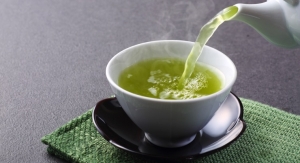03.22.17
A study published in the Journal of Food Science shows that seaweed may be a good source of macromolecular antioxidants. Seaweeds are rich in different bioactive compounds with potential uses in drugs, cosmetics and the food industry, researchers stated.
This study analyzed macromolecular antioxidants or non-extractable polyphenols, in several edible seaweed species collected in Chile (Gracilaria chilensis, Callophyllis concepcionensis, Macrocystis pyrifera, Scytosyphon lomentaria, Ulva sp. and Enteromorpha compressa), including their 1st HPLC characterization.
Macromolecular antioxidants are commonly ignored in studies of bioactive compounds. They are associated with insoluble dietary fiber and exhibit significant biological activity, with specific features that are different from those of both dietary fiber and extractable polyphenols. Researchers also evaluated extractable polyphenols and dietary fiber, given their relationship with macromolecular antioxidants.
Results showed that macromolecular antioxidants are a major polyphenol fraction (averaging 42% to total polyphenol content), with hydroxycinnamic acids, hydroxybenzoic acids and flavonols being the main constituents. This fraction also showed remarkable antioxidant capacity, as determined by two complementary assays. The dietary fiber content was over 50% of dry weight, with some samples exhibiting the target proportionality between soluble and insoluble dietary fiber for adequate nutrition. Overall, data showed that seaweed could be an important source of commonly ignored macromolecular antioxidants.
“Given the nutritional interest of these compounds, the consumption of these seaweeds might be promoted within the frame of a healthy diet and they can also be used as sources of macromolecular antioxidants and dietary fiber for the production of new ingredients,” researchers concluded.
This study analyzed macromolecular antioxidants or non-extractable polyphenols, in several edible seaweed species collected in Chile (Gracilaria chilensis, Callophyllis concepcionensis, Macrocystis pyrifera, Scytosyphon lomentaria, Ulva sp. and Enteromorpha compressa), including their 1st HPLC characterization.
Macromolecular antioxidants are commonly ignored in studies of bioactive compounds. They are associated with insoluble dietary fiber and exhibit significant biological activity, with specific features that are different from those of both dietary fiber and extractable polyphenols. Researchers also evaluated extractable polyphenols and dietary fiber, given their relationship with macromolecular antioxidants.
Results showed that macromolecular antioxidants are a major polyphenol fraction (averaging 42% to total polyphenol content), with hydroxycinnamic acids, hydroxybenzoic acids and flavonols being the main constituents. This fraction also showed remarkable antioxidant capacity, as determined by two complementary assays. The dietary fiber content was over 50% of dry weight, with some samples exhibiting the target proportionality between soluble and insoluble dietary fiber for adequate nutrition. Overall, data showed that seaweed could be an important source of commonly ignored macromolecular antioxidants.
“Given the nutritional interest of these compounds, the consumption of these seaweeds might be promoted within the frame of a healthy diet and they can also be used as sources of macromolecular antioxidants and dietary fiber for the production of new ingredients,” researchers concluded.




















